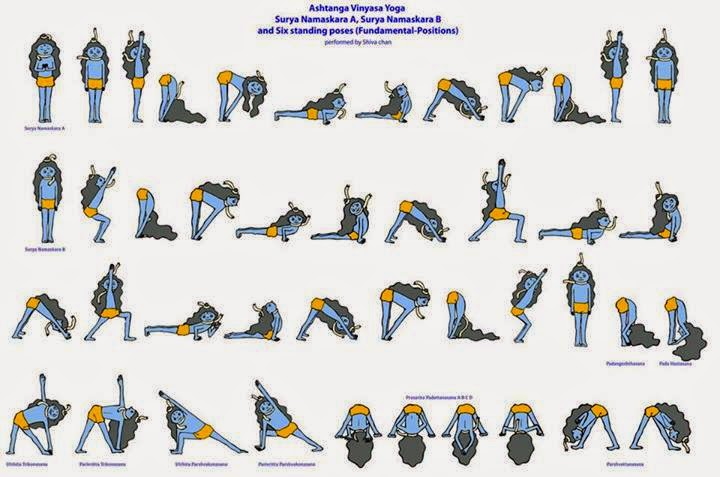Mahesh asks:
Was checking about if Ashtanga was suitable for me or not. So the first thing is suryanamaskar and then padmasana?
As
I know padmasana needs lot of practice and most basic thing is lot of
hip joint flexibility. Making a person jump to padmasana directly
wouldn't break/weaken the knee?
Mahesh, this is a really reasonable concern. I remember when I first saw a picture of someone practicing ashtanga. I was horrified! I thought to myself "oh, this yoga is only for very advanced athletes who are wildly flexible and strong, etc." It took a long time before I realized that what I was seeing in the picture was not at all what I would be expected to do in my own practice...at least not right away.
My favorite Ashtanga FAQs always include a line about how one should avoid looking at asana stuff on the internet, blogs, youtube, etc. Often we get really enthusiastic about something and want to learn everything we can about it and so we get books, magazines, videos, etc. hoping that exposure to the information will help us get closer to that thing we are enthusiastic about. While this is often helpful -- we do need information in order to know what to do and how to go about doing it -- it can also be very confusing and misleading.
Yogic texts always include a line or two about how you can't experience yoga from just reading books or from having all the gear or the perfect clothes. You're suppose to practice. That's what the whole 1% theory 99% practice thing is all about. The best way to go about this is one-on-one with a good teacher.
The hard part about talking about what we do in practice in a public forum like a website or whatever is that it is completely individual. So, to your point, do we always start with surya namaskar? Yeah, we do, but it might not look like what it looks like in a yoga demo video on youtube. I mean, think about it, most of the time something gets published because it is nice looking. The reality is usually much different... Imagine someone who has a broken leg. Do they start with surya namaskar? Yes. But maybe their teacher has them do the whole thing on the floor or with a chair or in bed. This is why it is important to work with a teacher. They can provide the appropriate instruction and develop a curriculum just for you.
Do we always finish with padmasana, even as a beginner? Yeah, we do, but it might not be in the exact shape you are thinking of. Asana should be steady and sweet and one should work gradually, slowly, consciously, and consistently, over a long period of time.
The important thing to remember is that this is a breath-based practice. If you can breathe, you can practice. The second is that asana is only one of the 8 limbs of Ashtanga yoga. Maybe you will simply sit in a chair for your padmasana and that is perfect. Not everyone needs to bend into a pretzel. But everyone definitely can practice the drishtis, the breathing, and the quality of steady and sweet asana. Everyone definitely can practice ahimsa (yama is the first limb of Ashtanga yoga and ahimsa is the first yama)...
Look for a traditional Mysore program and as my teacher says "No fearing, you come!"
Here is also a sweet post you might find inspiring:
"
The importance of a daily yoga practice" by Ivey DeJesus





















